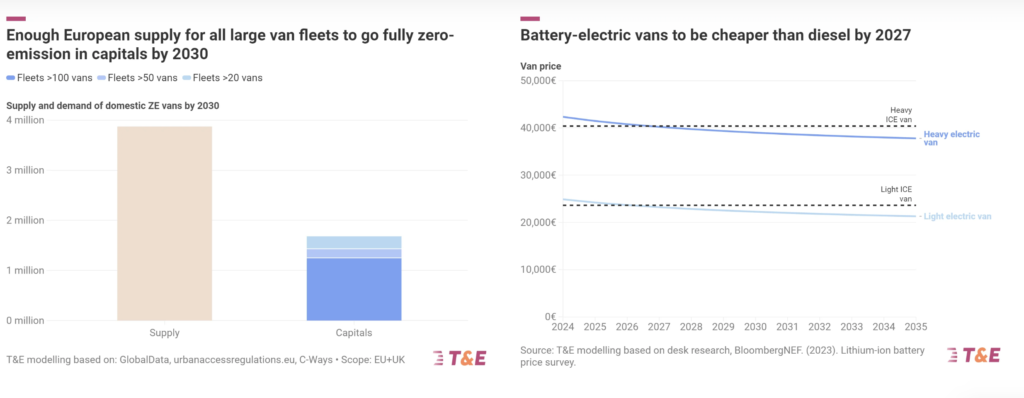Vans are the pillar of urban logistics. In the UK, they account for 89% of urban road traffic from commercial vehicles (2023). However, they are predominantly fuelled by diesel. They are responsible for 14% of nitrogen oxide (NOx) emissions from inner city traffic in European cities and 12% of greenhouse gas (GHG) emissions from road transportation in the European Union and the UK.
With a booming number of electric vans in Europe, research by T&E shows that all European capitals could introduce zero-emission freight zones by 2030 and have enough made-in-Europe e-vans to meet the requirements.
The market reflects a variety of operational needs. Low-mileage users may prefer a shorter range to avoid paying for oversized batteries. On the other hand, high-mileage users may prefer high-range vans to operate without relying on opportunity charging every day. Assuming a buffer of 30%, ranges of 230 km, 250 km, and 330 km can be considered sufficient for most commercial, B2B, and B2C users, respectively.
Remark: The T&E study didn’t examine the cost of charging infrastructure (CAPEX and OPEX), the impact of net congestion, or the disadvantages of smaller companies. There is no longer a level playing field for SMEs. Unfortunately the report mentions cargo bikes as a strong option, but doesn’t show how this can be done profitably.

In fact, by 2026, more e-van models will be available than diesel and petrol ones, and battery-electric vans will be cheaper to buy than their diesel counterparts by 2027.
